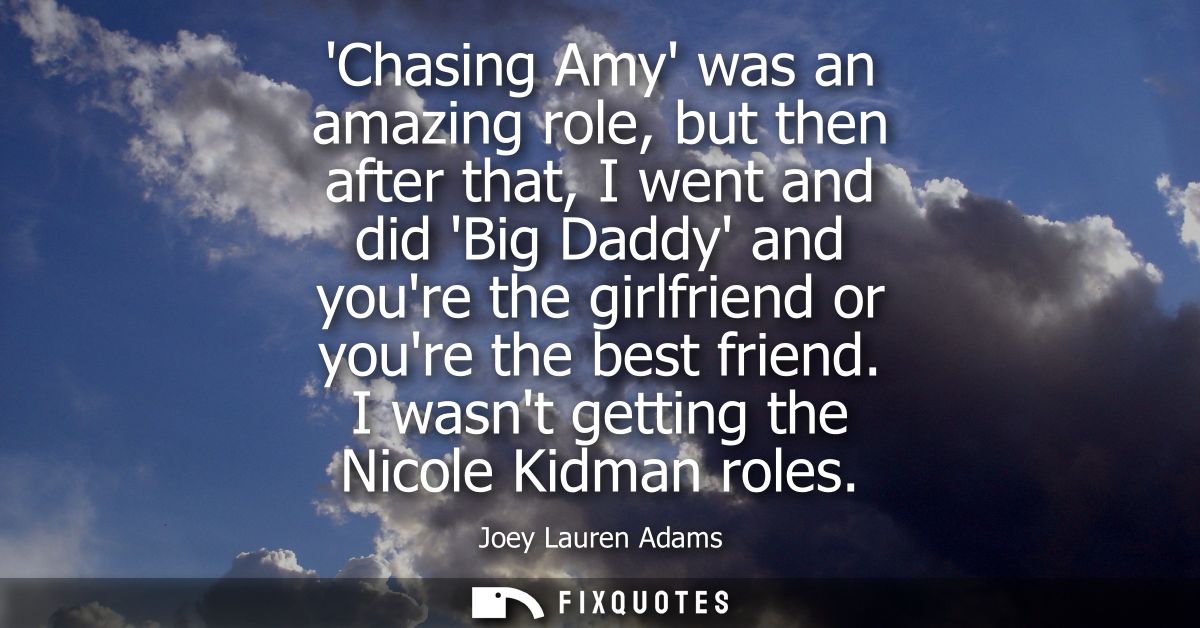"'Chasing Amy' was an amazing role, but then after that, I went and did 'Big Daddy' and you're the girlfriend or you're the best friend. I wasn't getting the Nicole Kidman roles"
About this Quote
Joey Lauren Adams reflects on her experiences in the film industry following a career-defining performance in "Chasing Amy". Adams indicates that while her role in "Chasing Amy" was substantial and meaningful, her subsequent opportunities restricted her to more traditional, less prominent characters, the girlfriend, the best friend, instead of leading, complex roles. This comparison emphasizes the limitations imposed on actresses in Hollywood, particularly after a breakthrough role. By referencing Nicole Kidman, Adams highlights the clear hierarchy in the types of roles available; Kidman, renowned for landing dynamic, leading-lady parts, represents the upper echelon of opportunity, whereas Adams is relegated to supporting characters.
Such casting patterns point to systemic issues within the film industry, where typecasting and entrenched stereotypes often shape the trajectory of talented women. After demonstrating her capacity to carry a film with the nuanced performance in "Chasing Amy", Adams was not rewarded with similar opportunities to showcase her breadth as an actress. Instead, she was funneled into the realm of secondary roles, suggesting a tendency for casting agents and decision-makers to overlook or pigeonhole women after a standout performance. This not only limits the artistic and professional growth of actresses like Adams but also robs audiences of seeing their full range.
The mention of "Big Daddy" further clarifies how these roles play out in practice: she was cast as a romantic interest or a close confidante, roles traditionally designed to support the male lead, rather than as the narrative's engine. Adams’s reflection expresses a broader frustration voiced by many women in the industry, after an impactful, layered role, consistent opportunities to lead did not follow. This candid assessment illustrates the challenges many actresses face in breaking into, and then remaining in, the circles that consistently produce leading roles, especially those typically reserved for a handful of celebrated stars.
More details
About the Author

